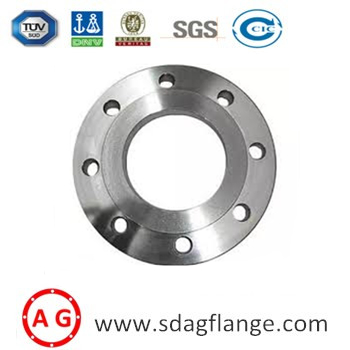EN1092-1 Flange: A Standard for Quality, Performance, and Safety in Flange Design
2025-01-24
Flanges are crucial components used in piping systems across various industries, from oil and gas to water treatment and chemical manufacturing. The EN1092-1 flange stands out as one of the most widely used and recognized standards for flange design in Europe and around the world. In this blog, we’ll explore the EN1092-1 flange, its significance, features, types, and why it’s essential for ensuring safe and efficient connections in industrial applications.
What is EN1092-1 Flange?
The EN1092-1 flange is part of the EN 1092 standard, which defines flanges used for pipework in Europe. The full name of this standard is "Flanges and their joints – Circular flanges for pipes, valves, fittings, and other appurtenances – Part 1: Steel flanges." This particular part of the standard addresses the design, dimensions, and mechanical properties of flanges made of carbon steel and stainless steel, which are commonly used for connecting pipes, valves, and other components in a wide range of industries.
This European standard provides specifications for flange dimensions, including bolt hole patterns, thicknesses, and pressure ratings, to ensure compatibility with various piping systems. The EN1092-1 flange is recognized for its high-performance characteristics, durability, and suitability for use in a variety of demanding environments.
Key Features of EN1092-1 Flanges
1. Standardized Design
The EN1092-1 flange adheres to standardized dimensions, which ensures compatibility with other components and equipment. This standardization guarantees that flanges from different manufacturers can be used interchangeably, simplifying the selection and installation process for engineers and technicians.
2. Material Versatility
EN1092-1 flanges are made from different types of materials, primarily carbon steel and stainless steel, although other materials such as duplex steel or alloy steel may also be used, depending on the specific application. These materials are selected for their strength, corrosion resistance, and high-temperature performance, making them suitable for various industrial conditions.
3. Variety of Pressure Ratings
EN1092-1 flanges are available in multiple pressure ratings, such as PN10, PN16, PN25, PN40, and higher. These ratings correspond to the maximum allowable pressure at a given temperature. This flexibility allows users to select the appropriate flange for their specific pressure requirements, ensuring the system's integrity under varying operational conditions.
4. Multiple Types and Designs
The EN1092-1 standard encompasses different types of flanges, each suited to specific piping applications. The most common types include:
- Type 1 (Slip-On Flange): A flange that slides over the pipe before being welded into place.
- Type 2 (Weld Neck Flange): A flange with a long neck, often used in high-pressure applications.
- Type 3 (Blind Flange): A solid flange used to close off the end of a pipeline.
- Type 4 (Threaded Flange): A flange with internal threads that can be screwed onto a pipe without welding.
- Type 5 (Socket Weld Flange): A flange that is welded to the pipe with a socket connection.
Each type is suited for specific use cases, from low-pressure applications to highly critical environments, such as chemical processing plants.
Why EN1092-1 Flanges Are Important
1. Safety
The EN1092-1 standard ensures that flanges are designed and manufactured to withstand specific pressure and temperature conditions, which is critical for the safety of the piping system. Properly designed flanges reduce the risk of leakage, ruptures, or catastrophic failures, especially in hazardous environments such as oil and gas pipelines.
2. Compatibility
Since the EN1092-1 flange dimensions and bolt hole patterns are standardized, flanges from different manufacturers can be used together in a system without worrying about compatibility issues. This interchangeability simplifies installation and maintenance, ensuring that replacement parts are readily available.
3. Durability and Performance
Flanges made according to EN1092-1 are built to last. The materials used, such as carbon steel or stainless steel, are specifically chosen for their resistance to corrosion, temperature extremes, and mechanical stress. This makes EN1092-1 flanges suitable for demanding applications, including those in chemical plants, water treatment facilities, and refineries.
4. Cost-Efficiency
EN1092-1 flanges provide a cost-effective solution for engineers and businesses looking for reliable, high-performance connections. Their standardized design helps reduce manufacturing and maintenance costs, making them an attractive choice for both large-scale industrial projects and smaller installations.
Applications of EN1092-1 Flanges
EN1092-1 flanges are used across many industries, and their application depends on the specific requirements of the system. Here are some common industries and applications where EN1092-1 flanges are commonly used:
1. Oil and Gas Industry
In the oil and gas sector, EN1092-1 flanges are used in pipeline systems that transport crude oil, natural gas, and other petroleum products. These flanges must withstand high pressures and temperatures while maintaining the integrity of the system.
2. Water Treatment Plants
Flanges are essential components in water treatment systems, where they help connect pipes, valves, and filters. EN1092-1 flanges made from stainless steel are particularly well-suited for these applications due to their resistance to corrosion in aqueous environments.
3. Chemical Processing
The chemical industry relies heavily on EN1092-1 flanges to connect pipes in reactors, pumps, and distillation columns. The materials used in these flanges ensure resistance to a wide variety of chemicals, making them safe and efficient in these environments.
4. Power Plants
In power plants, where high temperatures and pressure are common, EN1092-1 flanges are used in steam and cooling systems. These flanges ensure the smooth operation of critical systems such as turbines and heat exchangers.
5. HVAC Systems
In heating, ventilation, and air conditioning (HVAC) systems, EN1092-1 flanges help connect ducts, pumps, and valves to ensure that air and fluid flow smoothly throughout the system.
Conclusion
The EN1092-1 flange plays an essential role in ensuring the safe, efficient, and reliable operation of piping systems across numerous industries. Its standardized design, high-quality materials, and versatility make it an ideal choice for applications that require robust connections, whether in high-pressure or hazardous environments. Whether you're in the oil and gas, chemical, or water treatment industry, understanding the benefits and features of EN1092-1 flanges will help you make informed decisions when designing or maintaining your piping systems.



